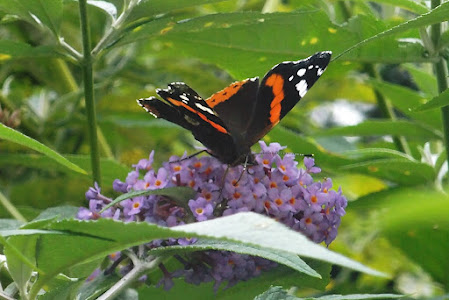Last week's golden Indian Summer weather has turned into blustery winds and lashing rain. This morning when I went out to the chicken run, the storms had damaged the overhead netting that protects our flock from buzzards and goshawks. Slipping in mud and squinting through rain-splashed eyes, I struggled to tie everything securely back into place, with cold slippery fingers.
How delicious then, to come back into the warm house, cast off my sodden jacket and boots, towel my hair dry and curl up with a hot cup of coffee and a few pages of a good book.
This is definitely one of the great pleasures of Autumn and Winter. Cold, wet weather and short, dark days make one truly appreciate cosiness. The Danish word 'Hygge' is often now used in the UK. As I understand it, its one of those words that has no direct English translation but it's usually used (in English) to mean cosy or comfortable. It's a good word, but I have to confess to loving the English word 'cosy', which seems to have been a little bit pushed to one side in the enthusiastic embracing of 'Hygge'.
When I hear 'cosy' I think of curling up under soft quilts and blankets, sitting round a crackling log fire with loved ones, a gentle candlelit glow, a warming mug of hot chocolate, fleecy slippers and snuggly scarves. It brings memories of the nights when, as a very small and sleepy child I was wrapped securely in a fluffy blanket for the journey home from my Grandparents' house. It makes me imagine hibernating animals in their dens, overwintering safely and securely through the harshest weather. It makes me eager to dig out sheepskin boots, favourite jumpers, quilted coats.
Here's to being cosy - one of Autumn's great pleasures.
Embracing Autumn: Lean Into Cosy
As Autumn winds begin to blow and the temperatures start to drop, embrace the opportunity to make life more cosy.
- Reacquaint yourself with flannel shirts, chunky sweaters, woolly socks or tights, comfy cardigans, boots, slippers, velvet and corduroy...
- Put a soft blanket or throw on the sofa so you can cuddle up under it in the evenings
- Enjoy candlelit evenings and early mornings
- Swap frappuccinos for cappuccinos, iced tea for steaming mugs of tea, chocolate milkshakes for hot chocolate and whipped cream...
- Enjoy a log fire in the hearth, or a bonfire in the garden
- Cosy up your home with increased insulation, thick curtains, draft excluders etc
- Pile up your bed with cushions, throws and blankets
- From within your snuggly sanctuary, listen to the rain against the windows and the wind in the trees, and appreciate the simple blessings of 'cosy'.


























